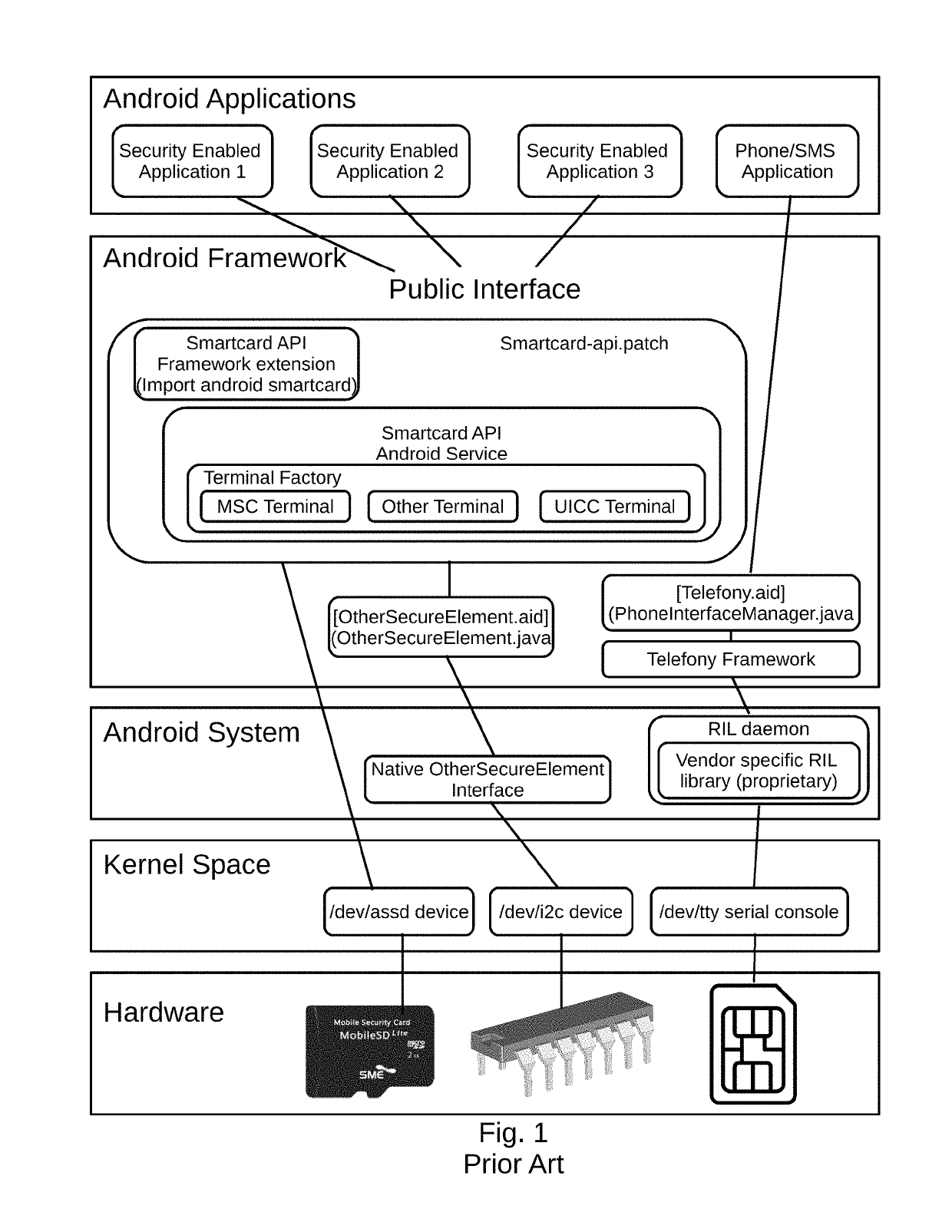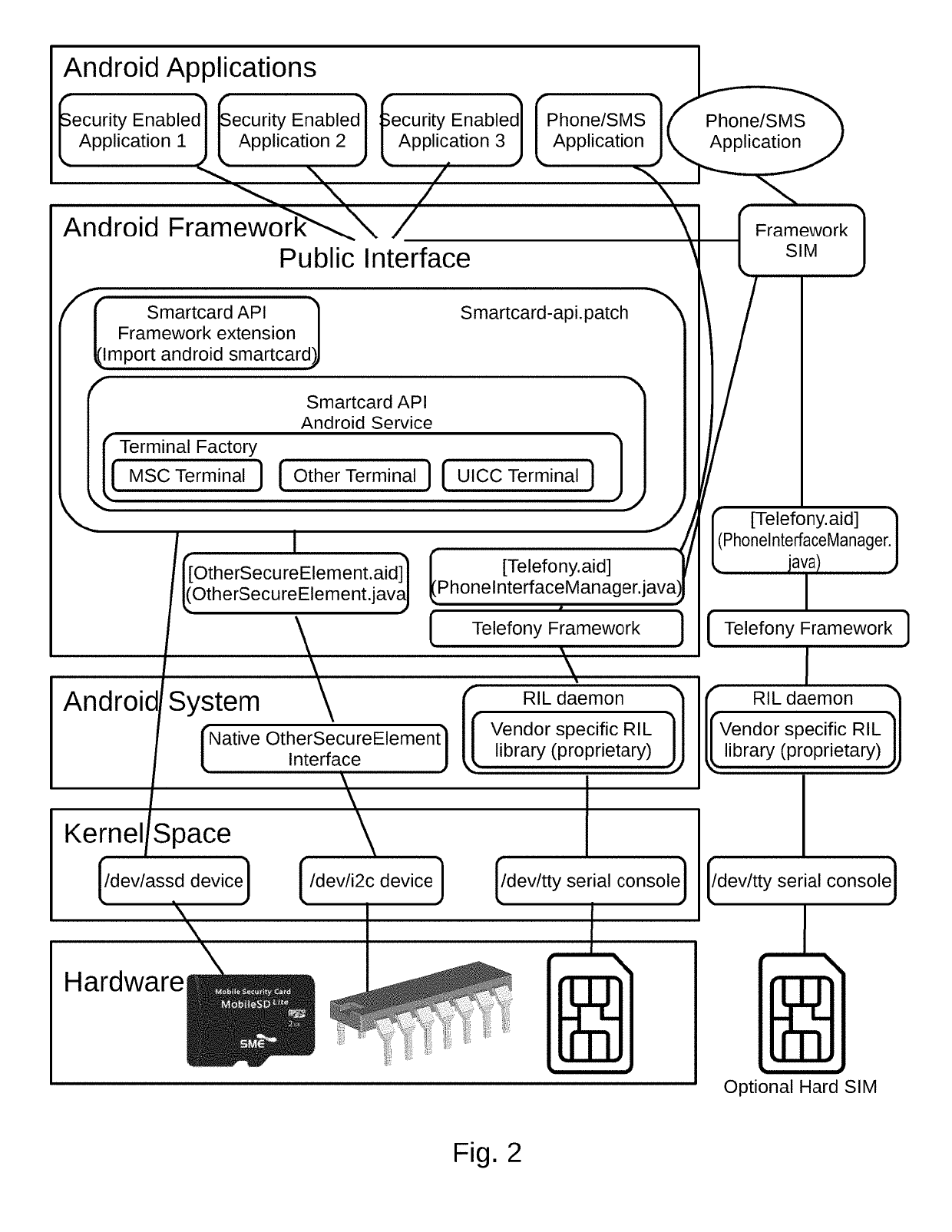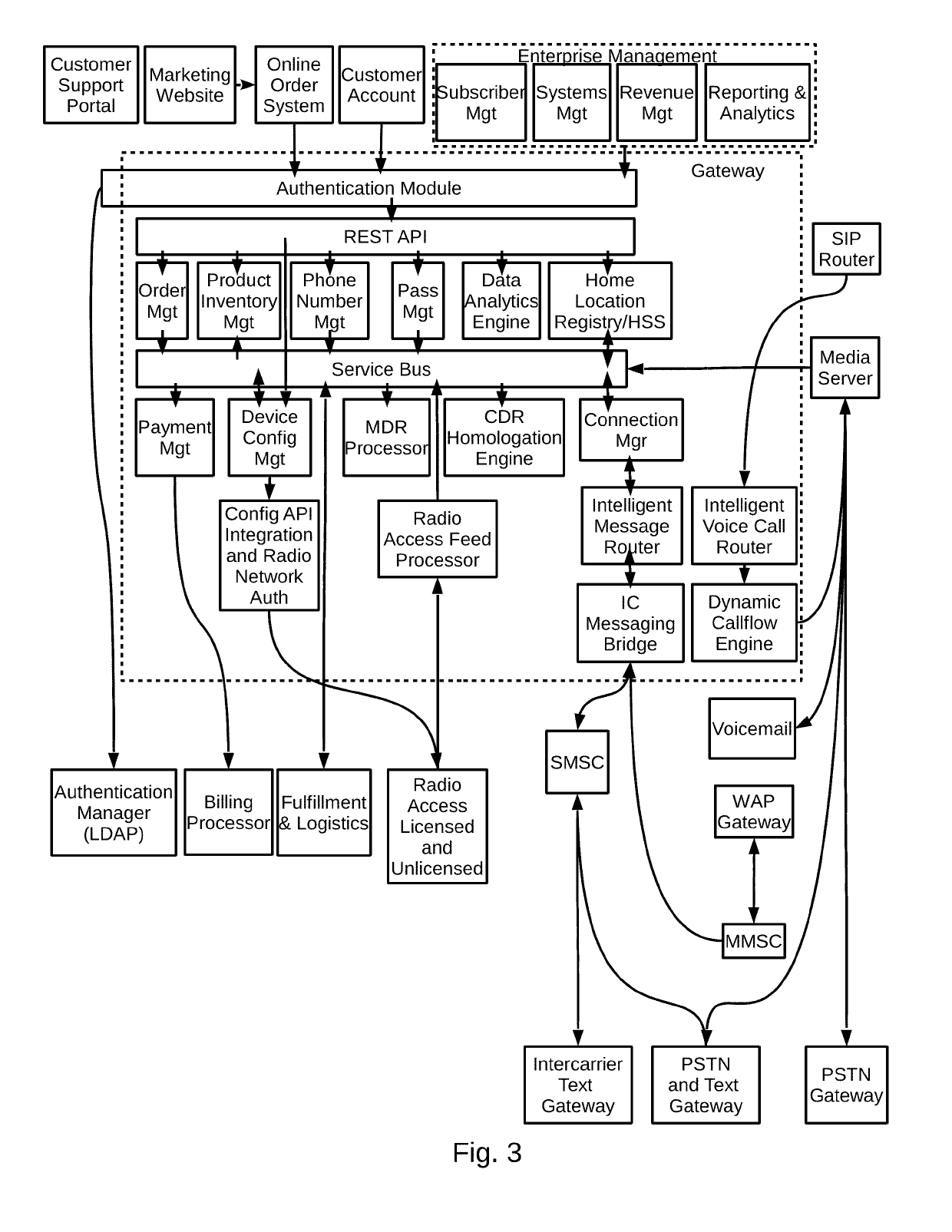Long term evolution-primary WiFi (LTE-PW)
a technology of evolution and wifi, applied in the field of long-term evolution-primary wifi (ltepw), can solve the problems of users' nodes not having adequate bandwidth to the network, users may not be present on the network or able to navigate the process, and users may not have desired content, etc., to achieve efficient allocation of resources, remove artificial scarcity, and reduce the effect of scarcity
- Summary
- Abstract
- Description
- Claims
- Application Information
AI Technical Summary
Benefits of technology
Problems solved by technology
Method used
Image
Examples
Embodiment Construction
[0194]The three major Operating Systems used for Mobile Stations (Android, iOS, Microsoft Phone) mimic each other regarding where and how permissions are allowed to access networks and run network-reliant applications or services on the device.
[0195]FIG. 1 shows a well-accepted base diagram of the operations of an Android Phone. A set of security enabled applications at an applications layer interface to an Android framework having a public interface. The Android framework provides a smartcard API, which provides various terminal services, such as MSC, UICC, and other. Beneath the public interface, the Android system provides a native secure interface, as well as a vendor-specific proprietary radio interface layer (RIL) daemon. In the kernel space, various device interfaces are provides, such as ASSD device, I2C device, and TTY serial console device, which in turn communicate with SD memory cards, I2C bus components, and SIM modules.
[0196]According to the present technology, the mob...
PUM
 Login to View More
Login to View More Abstract
Description
Claims
Application Information
 Login to View More
Login to View More - R&D
- Intellectual Property
- Life Sciences
- Materials
- Tech Scout
- Unparalleled Data Quality
- Higher Quality Content
- 60% Fewer Hallucinations
Browse by: Latest US Patents, China's latest patents, Technical Efficacy Thesaurus, Application Domain, Technology Topic, Popular Technical Reports.
© 2025 PatSnap. All rights reserved.Legal|Privacy policy|Modern Slavery Act Transparency Statement|Sitemap|About US| Contact US: help@patsnap.com



